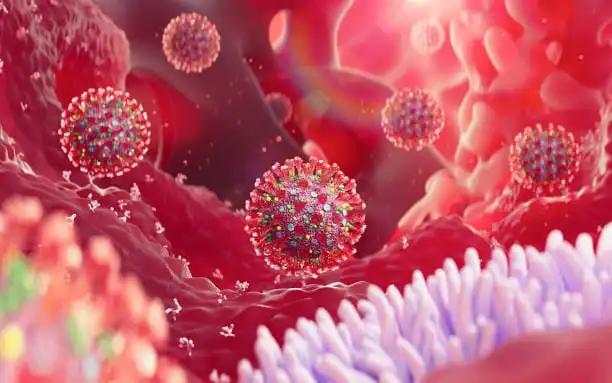KEY TAKEAWAYS
- The phase 1b/2 study assessed the safety, efficacy, and tolerability of nvtm added to rux in MF pts with suboptimal response to rux.
- The study’s primary objectives were to find the RP2D (Ph 1) and SVR by central review at Wk 24 (Ph2). Key secondary objectives were TSS improvement ≥50% by MFSAF v4.0 at Wk 24.
- Combining nvtm with rux in MF patients with suboptimal response to rux yielded significant improvements in SVR and TSS, maintaining a safe profile.
This global phase 1b/2 clinical trial enrolled adult patients (pts) with TP53WT myelofibrosis (MF) who had not responded optimally to ruxolitinib (rux). The phase 1b portion of the study utilized a 3+3 design to assess three doses of the navtemadlin (nvtm) drug, which was added to a pre-study dose of rux that pts had been taking for at least 18 weeks.
The aim was to identify the recommended dose for the phase 2 expansion of the trial (RP2D). Eligible pts were required to have symptoms related to splenomegaly, an Eastern Cooperative Oncology Group (ECOG) performance status of 0-2, a platelet count of at least 100×109/L, and to have been on a stable dose of ruxolitinib (at least 5 mg twice daily) for a minimum of 8 weeks. The study did not include patients who had previously experienced a response or progression of spleen enlargement while on ruxolitinib.
The trial’s primary objectives were to determine the RP2D in the phase 1 portion and assess spleen volume reduction (SVR) by central review at Week 24 in the phase 2 portion. Key secondary objectives included evaluating whether there was a 50% or greater improvement in the Total Symptom Score (TSS) according to MFSAF v4.0 at Week 24 (TSS-50).
As of February 8, 2023, the median follow-up duration in this study was approximately 5.5 months, involving the participation of 32 pts from 18 different sites across seven countries. Patients with myelofibrosis (MF) included in this global study comprised a diverse group who had experienced inadequate disease control while on ruxolitinib monotherapy.
In the phase 1b segment of the trial, MF pts who had not responded optimally to ruxolitinib received nvtm at three different doses: 120 mg (n=4), 180 mg (n=4), and 240 mg (n=6), in addition to their stable ruxolitinib dose. The recommended phase 2 expansion dose (RP2D) determined from this phase 1b portion was 240 mg once daily (Day 1-7/28-day cycle).
The pre-study rux dosage varied between 5 and 25 mg twice daily. Patients had a median prior rux treatment duration of 21.6 months (ranging from 7 to 129 months). The median spleen volume at the start of the study was 2111 cm³ (ranging from 650 to 3549 cm³), and the median Total Symptom Score (TSS) was 15.2 (with a range of 4 to 49.1).
As of the data cutoff, 11 pts reached the 24-week mark, while five pts discontinued treatment before reaching week 24. Based on an intent-to-treat (ITT) analysis with a sample size of 16, seven pts achieved a 25% reduction in spleen volume (SVR-25), accounting for 44% of the group. Five pts achieved a 35% reduction in spleen volume (SVR-35), representing 31% of the total. Additionally, six pts achieved a 50% improvement in Total Symptom Score (TSS-50), making up 38% of the sample.
In a modified ITT analysis, which considered only pts who reached week 24 (totaling 11), 64% achieved SVR-25, 45% achieved SVR-35, and 55% achieved TSS-50. The median reduction in circulating CD34+ cells from the pre-nvtm dose on Cycle 1 Day 1 to either Week 12 or Week 24 in combination with nvtm was -81% and -86%, respectively (with sample sizes of 6 and 3, respectively).
Treatment-emergent adverse events (TEAEs), regardless of their relationship to treatment, were reported in 88% of pts, with 33% categorized as grade 3/4. The most common TEAEs were related to the gastrointestinal system and cytopenic effects. Grade 3/4 events were infrequent, and there were no reported grade 5 events during the study.
The addition of nvtm to rux in MF pts who had not responded optimally to rux demonstrated significant clinical improvements in SVR and TSS across various stable ruxolitinib doses, with a safety profile that is deemed acceptable. These findings provided compelling evidence to warrant further exploration in an ongoing phase 3 study known as BOREAS-2.
Clinical Trial: https://classic.clinicaltrials.gov/ct2/show/NCT04485260
Mascarenhas, J., Jain, T., Otoukesh, S., Gerds, A.T., Lucchesi, A., Sosa, I.R., Laribi, K., Mishchenko, E., Radinoff, A., Benevolo, G., Vannucchi, A.M., Boyer, F., Quittet, P., Radsak, M., Machet, A., Bose, P., Huang, Z., Qamoos, H., McGreivy, J., Rothbaum, W.P., Verstovsek, S., Passamonti, F. AN OPEN-LABEL, GLOBAL, PHASE (PH) 1B/2 STUDY ADDING NAVTEMADLIN (NVTM) TO RUXOLITINIB (RUX) IN PATIENTS (PTS) WITH PRIMARY OR SECONDARY MYELOFIBROSIS (MF) WHO HAVE A SUBOPTIMAL RESPONSE TO RUX. EHA Library. Mascarenhas J. 06/08/2023; 387910; S210.



